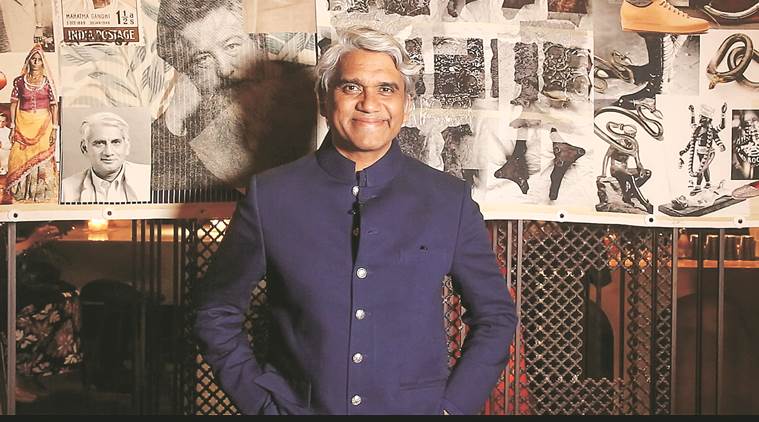 Tencel is lyocell fibres extracted from natural raw wood, which comes from socially and environmentally responsible forests in Europe.
Tencel is lyocell fibres extracted from natural raw wood, which comes from socially and environmentally responsible forests in Europe.
AT THE media preview of his Winter/Festive 2018 collection in Mumbai recently, designer Rajesh Pratap Singh wore an indigo bandhgala jacket, embodying his two-decade-old label’s design philosophy. Apart from the obvious crisp tailoring, impeccable finish and attention to detail, it also wore one of the designer’s favoured colours that features in most of his collections. “The texture and richness that natural indigo has is difficult to achieve. It also changes through usage, fading in parts, characteristic to the use the wearer puts it through. In a sense, it is interactive,” he says on his love affair with indigo.
“Welcome to the Jungle”, his second collection created in collaboration with Lenzing, using the Austrian company’s sustainable fibre brand Tencel, to be presented at the Lakme Fashion Week (LFW) on Thursday, also features indigo quite prominently. While the media-shy Pratap is not too willing to give away details about this Indianwear collection and his inspirations and mood board, he’s only too happy to talk about how he has innovatively combined the strength of the green fibre Tencel with artisanal Indian textile traditions to present his idea of eco-friendly fashion. Excerpts from an interview:
You’ve said this collection was about making a meaningful contribution. Please elaborate.
Tencel is lyocell fibres extracted from natural raw wood, which comes from socially and environmentally responsible forests in Europe. As a material, it embodies the concept of sustainability, both in its process of manufacturing as well as its biodegradability in the afterlife. This collection explores the versatility of this yarn and fabric and provides a sustainable alternative material. People need to see that sustainability does not mean compromise. It means being responsible and making the right choice.
This is your second collection working with Tencel. What about the fibre fascinates you?
I have always been interested in the exploration of new materials, and when I was approached for this project, which was for the duration of a year, I believed we could work in various mediums and through craft and technology, both handloom as well as hi-tech. In the first season, we worked with existing fabrics and experimented using Tencel yarn in traditional handloom weaves. This season we have taken that experiment a step further with an amalgamation of crafts including embroidery, hand block print, ikat, leheriya tie-and-dye, Jamdani and traditional brocade jala-weaving techniques.
Why did you decide to do an Indianwear line and what else can we expect from this collection?
I chose to do modern adaptations of traditional Indian costumes as today buyers want to retain their roots and essence, yet have a modern global outlook and exposure. This collection is reflective of the times we live in. White will always find a prominent place in our offering. It is offset in the rest of the show by a soft colour palette of pastels, which culminates into strong jewel tones. Hand-painted trainers accessorise the show.
In today’s time, should sustainability be a rule rather than an exception?
It is very important to understand that sustainability is not a passing trend. It should be a pressing need for everybody. Any industry, whether they are making clothes, cars or vacuum cleaners, if they don’t take sustainability into account, they are going to become obsolete.
What sustainable practices have you employed with your own business?
We have always lived by the philosophy that a timeless product is the first step to sustainability. If you can wear a style that defies trends and that survives the changing fashion seasons, you are already partaking in a process of minimising consumption and, therefore, treading lightly on nature. It also makes the piece you own that much more precious. Nothing gives me more pleasure than when I encounter a client wearing a 10-year-old piece with a sense of pride, and its design is still relevant today. That kind of creative endurance is what I would define as sustainable.
Are sustainability and affordability/ accessibility becoming opposing ideas today?
It is incorrect to confuse sustainability with something that has to be necessarily expensive. Sustainability encompasses a way of life and an anti-consumption, anti-wastage mindset. It means opting for products or companies that follow a certain philosophy, where they take extra care and have achieved a system of functioning that is efficient, and does not pollute or take away from nature.